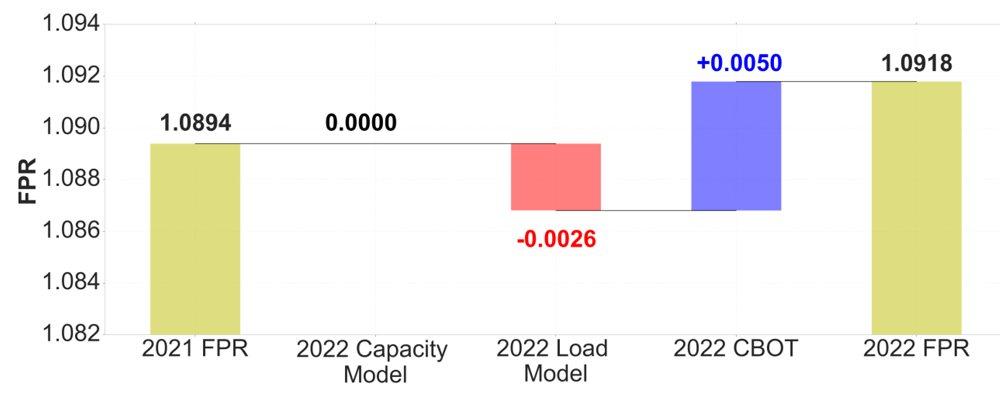Planning Committee Reviews Capital Budget
The Planning Committee reviewed a $45 million capital budget proposal during its Tuesday meeting, a potential $3 million increase over current funding.
Nearly half of the suggested budget goes toward current applications and systems reliability, with $22 million allocated toward items such as dispatch tool enhancements, data analytics and cybersecurity. Spending on facilities and technology infrastructure would also increase to $12 million.
Less spending is being requested for application replacements and retrofits, which would reduce by a fifth down to $8 million, while new products and services as well as interregional coordination would remain static.
The spending plan will be reviewed by the Market Implementation Committee and Operating Committee this week and will be considered by the Finance Committee on Sept. 22 and 28. The Finance Committee will draft a recommendation letter to the PJM Board of Managers, which will consider approving the budget on Oct. 4.
Reserve Requirement Study Recommends Increasing FPR and IMR
The PC also received a presentation of the 2022 Reserve Requirement Study results, which recommends increasing both the forecast pool requirement (FPR) and installed reserve margin (IRM) compared to the 2021 study results. This year’s study results recommend an IRM of 14.9% for the 2023/24 delivery year, rather than the 14.8% favored in last year’s study for that year, and a FPR of 1.0930 next year, as opposed to 1.0901 recommended in the 2021 study.
The recommended IRM would fall to 14.8% in 2024/25 and continue down to 14.7% for the following two years. The FPR would decline to 1.0926 in 2024/25 and would sit at 1.0918 for the next two years.
 2022 forecast pool requirement (FPR) waterfall chart | PJM
2022 forecast pool requirement (FPR) waterfall chart | PJM
The study also proposed winter weekly reserve targets for the upcoming season, recommending 21% maximum monthly available reserves for December, 27% for January and 23% for February. The WWRT was set using RTO-aggregate outage data from the 2007/08 delivery year through last year.
The PC will take another look at the study in October, when it is scheduled to vote on the FPR, IRM and WWRT. From there, the Operating Committee is slated to vote on the WWRT in November, and the FPR and IRM are set to be voted on by the Markets and Reliability Committee and Members Committee in October through November. The PJM Board will consider final approval in December. The study’s assumptions were endorsed by the PC in June, and its load model selection was endorsed in August.
Tx Refunds Could Date Back to 2014
PJM could be required to refund transmission cost allocations dating to 2014 as a result of an appellate court ruling last month that remanded FERC decisions on two North Jersey transmission projects, PJM attorney Pauline Foley told stakeholders.
The D.C. Circuit Court of Appeals said FERC failed to explain why the solution-based distribution-factor analysis (DFAX) method should be used to assign the costs of two North Jersey transmission projects but not for a similar project in Artificial Island, partially supporting appeals by two merchant transmission operators. (See DC Circuit Faults FERC on Cost Allocation of NJ Transmission Projects.)
The case involves $1.3 billion in transmission upgrades authorized by PJM to address short-circuit problems between Public Service Electric and Gas’s Bergen and Linden switching stations and repairs to and around the utility’s Sewaren substation.
If FERC decides not to try to justify its distinction between the projects “we do not have a cost allocation to replace solution based DFAX for the Bergen-Linden and Sewaren projects,” said Foley, who noted the RTO has approved the allocations for the projects in late 2013 and early 2014. “Depending on what FERC determines, refunds could date back as far as 2014,” she said.
Annual Pre-qualification Window Opens for Competitive Planning Process
The annual one-month pre-qualification window for transmission developers seeking to submit projects under the competitive planning process has opened. Applications to qualify as designated entities can be submitted between Sept. 1 through Sept. 30 at ProposalWindow-Prequal@pjm.com.
To remain qualified, participants are required to confirm or update their pre-qualification information at least every three years. The Competitive Planner Tool now contains a new Pre-qualification Submission feature allowing form-based submissions and the ability to attach public or confidential versions of documents.


